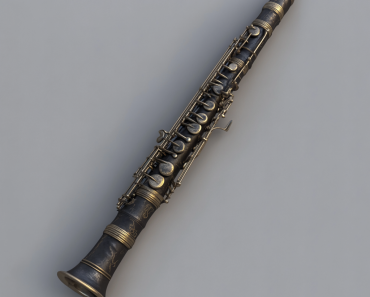Table of Contents
Why I Love the Bassoon
Introduction
The bassoon is a remarkable instrument, with a voice that’s rich, warm, and entirely its own. Among woodwinds, it stands out both for its unique sound and its quirky presence. My love for the bassoon began the moment I first heard its deep, resonant tone, an experience that opened my ears to the possibilities and character of this underappreciated instrument. Here’s why I’m so captivated by the bassoon and why I believe it deserves more attention.

Why I Love the Bassoon
The Unique Sound of the Bassoon
The bassoon’s sound is unlike any other. It has a distinctive tone that’s both warm and rich, resonating deeply in the lower range while remaining mellow in the higher notes. This instrument’s ability to shift from deep, sonorous lows to a sweet, reedy high register gives it remarkable versatility. It can seamlessly transition from supporting harmonies in the background to leading a melody with character and flair.
This range and versatility are what make the bassoon’s voice stand out in any setting, whether it’s an orchestra, a chamber ensemble, or even a solo performance. The bassoon can evoke a sense of dignity and gravity one moment, then turn playful and lighthearted the next. It’s this ability to adapt and surprise that makes it such an engaging instrument to listen to—and even more so to play.
The Expressive Quality of the Bassoon
The bassoon’s tone is famously expressive, capable of capturing a wide range of emotions. It can be playful, comical, and even mischievous, bringing humor and charm to pieces that need a bit of lightness. But it can also convey a profound melancholy, adding depth to somber compositions and bringing a haunting beauty to certain passages.
Some of my favorite bassoon pieces highlight this versatility. In works like Stravinsky’s The Rite of Spring, the bassoon opens the piece with a haunting solo that sets an intense, foreboding mood. Conversely, in Mozart’s The Marriage of Figaro, the bassoon’s lighthearted interjections add a playful element that brings the music to life. This expressive range is what makes the bassoon such a powerful instrument—it can evoke laughter and bring tears, sometimes within the same piece.
The Bassoon’s Role in Ensemble and Orchestral Music
In orchestral settings, the bassoon plays a unique role. It often acts as a bridge between the bass and the higher woodwinds, providing support and adding richness to the ensemble’s overall sound. This ability to connect different sections of the orchestra makes the bassoon indispensable in creating depth and texture in compositions. Its tone is both grounding and flexible, allowing it to blend into harmonies while also contributing distinct lines that add character to a piece.
In famous orchestral works, the bassoon often takes on memorable roles. Tchaikovsky, Ravel, and Stravinsky all knew how to draw out its qualities, creating passages where the bassoon’s voice adds emotional weight and melodic intrigue. Listening to these pieces has deepened my admiration for the bassoon’s place in ensemble settings; it doesn’t just fill space—it brings out colors that make the entire piece more vibrant.
The Physical and Technical Challenges of the Bassoon
One of the things that makes the bassoon so fascinating is its complexity. It’s a large, somewhat unwieldy instrument with a design that’s intricate and unique. Playing it involves mastering the double reed—a skill that requires dedication and practice. The reed itself is delicate, and each one has a personality of its own, meaning bassoonists often have to adjust their technique depending on the reed’s specific response.
These challenges make the bassoon an instrument that demands patience and persistence. But overcoming these hurdles is part of the joy of playing. Once you’ve mastered the basics, there’s a rewarding feeling in bringing such a distinctive instrument to life. The bassoon’s physical and technical demands make it a journey to learn, and every player’s dedication is reflected in the quality of their performance.
The Bassoon’s Quirky Personality and Presence
One of the bassoon’s most endearing qualities is its quirky personality. Known as one of the orchestra’s “characters,” the bassoon can bring humor and lightness to any piece. Its voice is often used to evoke animals, tricksters, and other playful elements in classical music, giving it a persona that’s both charming and unique.
Yet the bassoon can also carry a dignified presence, playing solemn lines that add weight to serious compositions. This duality—the ability to be both lighthearted and serious—is what gives the bassoon its special charm. It’s an instrument that can bring laughter, but it can also command respect, making it one of the most versatile characters in the orchestra.
Conclusion
The bassoon holds a special place in my heart, not just for its unique sound, but for the expressive depth, technical challenge, and personality it brings to music. It’s an instrument that defies expectations, proving that beauty can come from the most unexpected places. Listening to the bassoon is a joy, and playing it is a deeply rewarding experience. For me, the bassoon represents everything I love about music—the chance to connect, to express, and to explore new depths of sound and emotion.
If you’ve never taken the time to listen to the bassoon, I encourage you to seek out pieces that feature its remarkable voice. Whether it’s a symphony, a chamber piece, or a solo performance, the bassoon has something unique to offer, and it might just inspire you to fall in love with it, too.
Additional Reading
More blog posts can be found here. Consider following Breve Music Lessons on Facebook and listening to the Breve Music Podcast.





